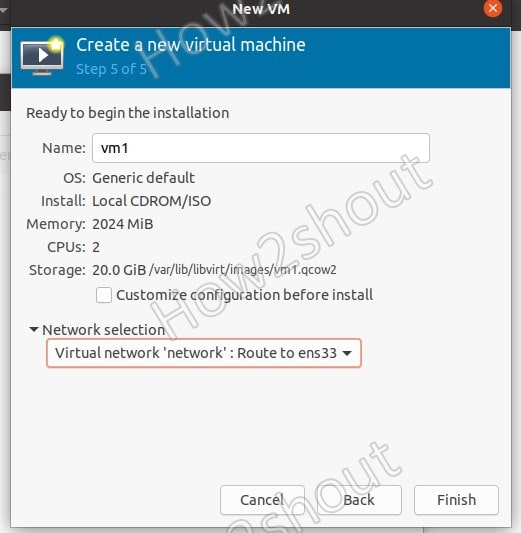

#Ubuntu qemu full
An embedded VNC and SPICE client viewer presents a full graphical console to the guest domain. Wizards enable the creation of new domains, and configuration & adjustment of a domain’s resource allocation & virtual hardware. It presents a summary view of running domains, their live performance & resource utilization statistics. It primarily targets KVM VMs, but also manages Xen and LXC (linux containers). The virt-manager application is a desktop user interface for managing virtual machines through libvirt. When using KVM, QEMU can virtualize x86, server and embedded PowerPC, and S390 guests. QEMU supports virtualization when executing under the Xen hypervisor or using the KVM kernel module in Linux.
#Ubuntu qemu code
When used as a virtualizer, QEMU achieves near native performances by executing the guest code directly on the host CPU. By using dynamic translation, it achieves very good performance. an ARM board) on a different machine (e.g. Tested on an Ubuntu 18.04 host, QEMU 1:2.11+dfsg-1ubuntu7.3, nvidia-384 version 390.48-0ubuntu3, Lenovo ThinkPad P51, NVIDIA Corporation GM107GLM GPU.QEMU is a generic and open source machine emulator and virtualizer.When used as a machine emulator, QEMU can run OSes and programs made for one machine (e.g. However, for the most part, you will likely just want to use the cloud image instead of the server image with emulation, as it does not have the interactive installer, and is usable from the CLI by default.
#Ubuntu qemu how to
I just wasn't able to do the initial install with -nogrphic to get rid of the GUI entirely: How to boot and install the Ubuntu server image on QEMU -nographic without the GUI?īut after the initial boot, after editing GRUB configs I achieve that: How to get to the GRUB menu at boot-time using serial console? The exact same procedure as mentioned for desktop also worked for the server image. If you want an image that boots without the need for any interaction on the installer, see: Is there any prebuilt QEMU Ubuntu image(32bit) online? This section was tested on Ubuntu 20.04 host. More dedicated question: How to share a folder between KVM host and guest using virt-manager? More details at: That also shows the corresponding fstab entry. Mount -t 9p -o trans=virtio,version=9p2000.L host0 /mnt/9p for malware analysis)Īdd to QEMU CLI: -virtfs local,path=/path/to/share,mount_tag=host0,security_model=mapped,id=host0Īnd mount on guest with: sudo mkdir /mnt/9p But on host _GL_SYNC_TO_VBLANK=0 vblank_mode=0 glxgears gives 20k FPS, so I'm guessing graphics were not accelerated?ĭisable networking (e.g. Still with SPICE and QXL, glxgears gives 1k FPS, and the exact same with regular SDL. The root cause of the mess is that QEMU devs seem more focused on non-interactive usage, rather than implementing things like this reliably and therefore killing VirtualBox once and for all: Tried -spice port=5930,disable-ticketing + remote-viewer spice://127.0.0.1:5930, and spice-vdagent is pre-installed on guest, but no success.


 0 kommentar(er)
0 kommentar(er)
